Parseval's Quest (First Problem)
A Decision Game from 1893
Welcome to the Tactical Notebook, where you will find more than four hundred tales of armies that are, armies that were, and armies that might have been. If you like the Tactical Notebook, please share it with your friends. If you don’t like the Tactical Notebook, there is something seriously wrong with you. Please report to sick bay at once.
This is the second post in Parseval’s Quest, a decision game based on a problem that Count Schlieffen presented to officers of the Great General Staff in 1893. If you haven’t done so already, please read the first installment of this series.
It is the afternoon of 1 June 1893.
You and the staff of the II Army Corps are en route to Forbach, where you intend to establish your headquarters. You expect to arrive there on the afternoon of 2 June 1893.
The 5th Infantry Division is deployed, facing south and west, in the vicinity of the village of Gross Tänchen.
The 3rd and 4th Infantry Divisions, as well as the Cavalry Division (which is attached to your command), are arriving, by train, in villages in the vicinity of the city of Saarbrücken. The unloading of these divisions should be complete by the afternoon of 2 June 1893.
While your divisions are arriving, other things are going on. Officers of the Supply Department [Intendantur] are requisitioning horses and wagons in the towns of St. Avold, Püttlingen, Saargemünd, Saaralben, and Saarunion. Two other German army corps are traveling, by train, to Saargemünd and Saaralben. (The trains carrying those formations will begin to arrive on 3 June 1893.)
Earlier today (1 June 1893) forward elements of the 5th Infantry Division have made contact with French patrols. The latter seem to belong to the divisions of 6th Army Corps.
According to your intelligence officer, the 6th Army Corps consists of two infantry divisions, a brigade of cavalry, and a regiment of field artillery. (Each of the infantry divisions also possesses field artillery of its own.) These elements make the 6th Army Corps a force of twenty-four infantry battalions (each of a thousand rifles), eight cavalry squadrons (each of a hundred and fifty sabers), and twenty batteries of field artillery (each of six field pieces.)1
Your 5th Infantry Division is much smaller than the French 6th Army Corps. It consists of thirteen battalions, four squadrons, and eleven batteries.2 (The units are similar in both size and armament to their French counterparts.)
Of late, there has been a lot of rain. Thus the vineyards, fields, and pastures that cover most of the ground in this part of Lorraine are wet.
What is your plan? In particular, what orders to you give the commander of the 5th Infantry Division.
Please feel free to use the comments section to post your solution.
After you have composed your solution, you are ready to look at the “author’s solution” to the first problem (that of Count Schlieffen).
Most of the French field pieces are 90mm de Bange guns (Model 1877). A few. however, may be new 120mm and 155mm howitzers of the model adopted in 1890.
The thirteenth battalion of the 5th Infantry Division is a Jäger Battalion.





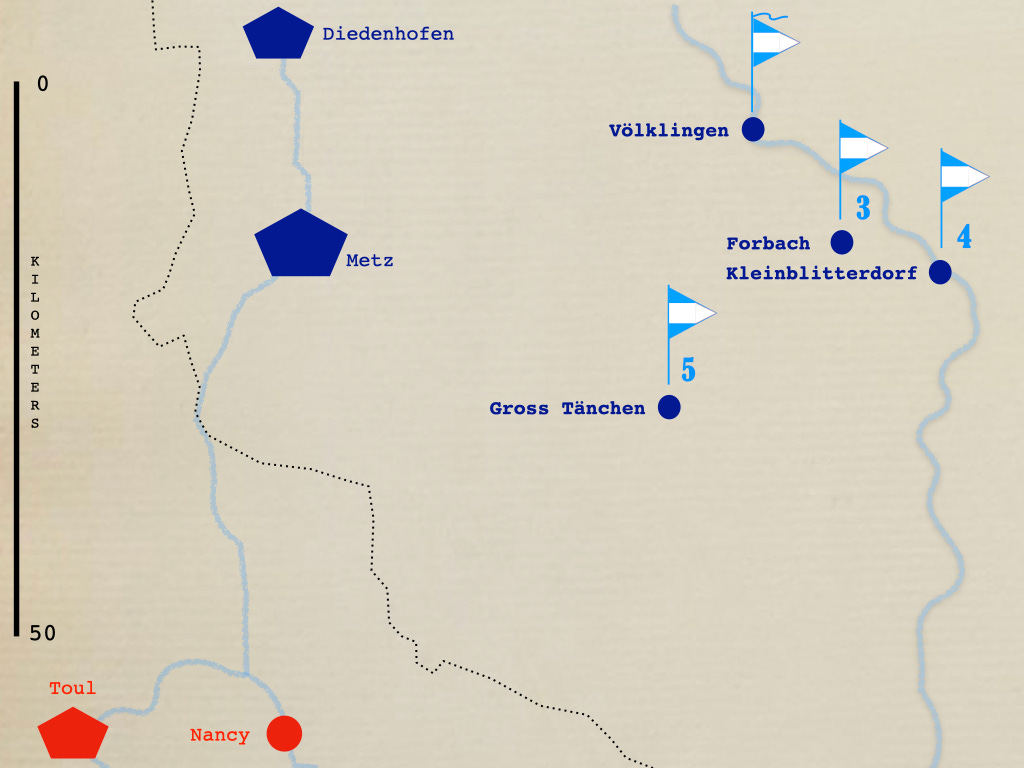

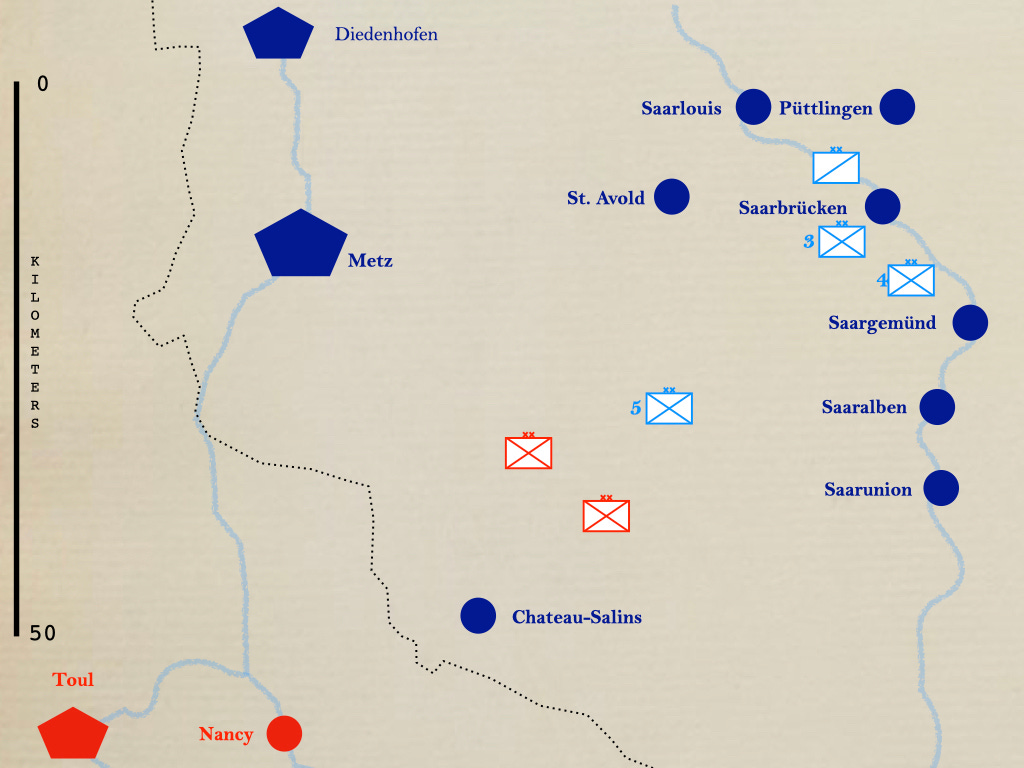
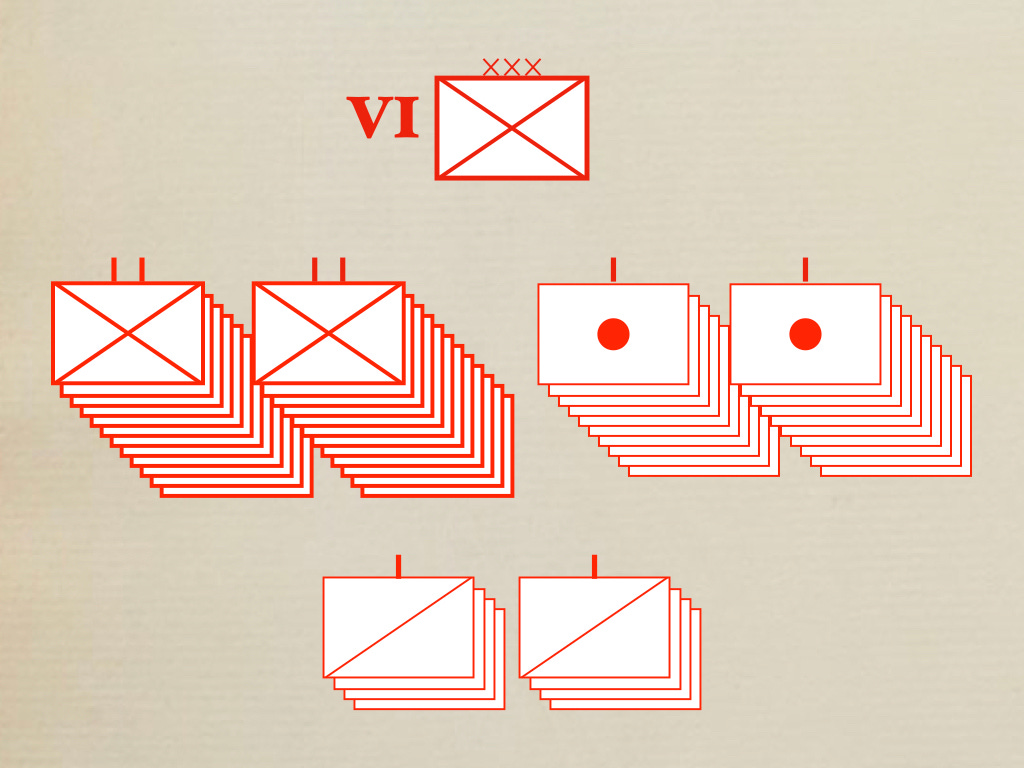
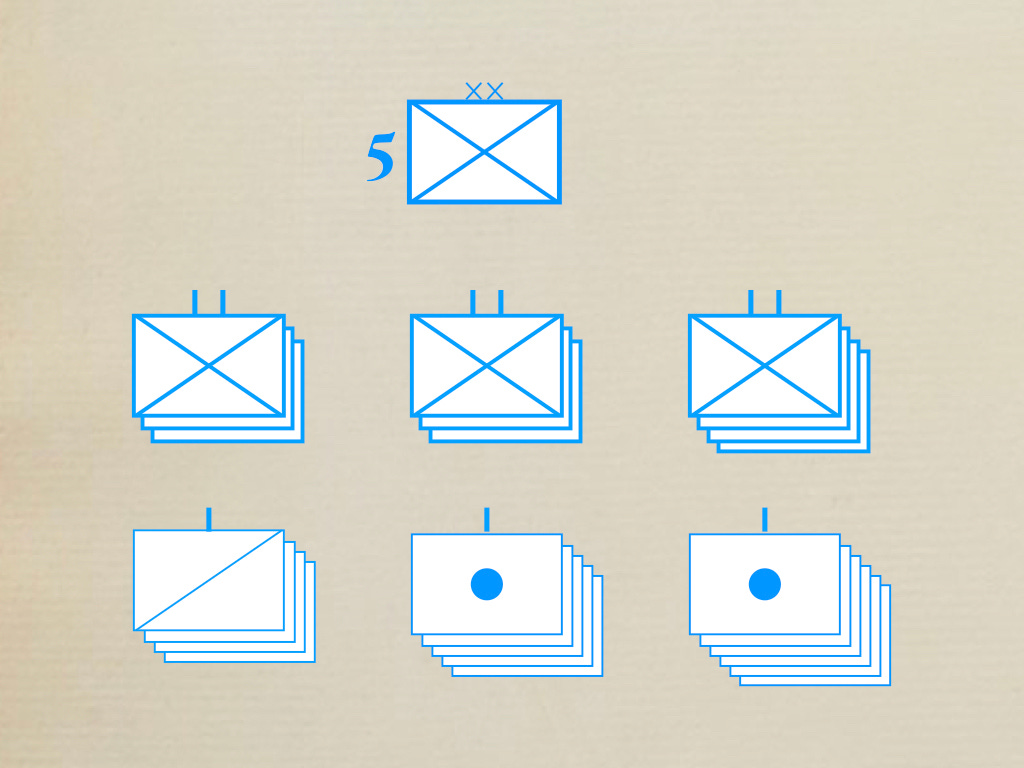
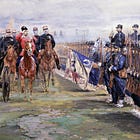
I know that on (probably) day 1 of the war the only deployed force I have is facing a formation who outnumber them c.2:1 in all arms, who have begun an attack with (I assume) the intention of preventing my side's mobilisation. I assume my own command will outnumber the enemy once fully deployed (12-48hrs) as I have 2 more infantry divisions and a cavalry division to come. I know it is the enemy who has declared the war. Therefore I assume my opposite number was more organised at their jumping-off point than I am now and this will be a full-scale attack on their part.
Although I assume enemy reserves will not ultimately be in short supply. I know that by day 3, 2 more formations of roughly the size of my own command will have arrived in the theatre and begun to deploy. Therefore time is more my friend than theirs.
I assume the Metz fortress has its own garrison and for the purposes of this exercise I do not need to worry about the enemy seizing it undefended.
I assume the major roads in the region form a rough spider's web with Gross Tänchen at the centre and the other indicated settlements on its spokes.
I know that the weather has been poor so while the enemy's overall advance will be slowed, their artillery in particular will make worse headway even on what good roads exist in the region. If my above assumption is correct, every gun and most of the reservists they have will have to go along the same road from Château-Salins.
I hope a decent proportion of the pioneers mentioned in the introduction to the case are in GT with the 5th, and if so have not been idle in recent months preparing fortifications.
On the basis of all the above, it seems to me that GT is a key defensive node for our mobilisation and in any case there is as yet no need to even think of retreat. A 2:1 ratio in the attacker's favour is unlikely to be preponderant against a prepared defence, the more so as the enemy will almost certainly be disorganised by the march and lacking in artillery support (since it appears to be c.40km from Nancy and c.25km from CS as the crow flies). My orders are as follows:
The 5th is to hold GT against the enemy and await imminent reinforcement. Cavalry are to screen the roads north and east, to minimise enemy cavalry actions but mostly for reconnaissance - if the enemy has managed to bring artillery or significant infantry formations up to or beyond GT on its axis of advance this is to be reported immediately. Infantry may push out beyond the village to engage the enemy if the engagement seems on favourable terms or of [the 19th-c equivalent of] operational benefit, but the guns are not to advance and infantry are not to move beyond the protection of the artillery unless circumstances are exceptionally favourable. The divisional commander may retain a reserve of cavalry to assist in this latter task if he sees fit, but their main priority is to keep HQ informed regarding the enemy's disposition.
I would do three things while waiting for my main force to arrive.
1) I would take my best marksmen, see how close I could get to the enemy, and start sniping their officer corps.
2) I would use my cavalry to carry out quick raids against their foot infantry.
3) I would place my artillery so as to try to mitigate their cavalry attacking my infantry.
High ground, high ground, high ground.